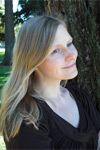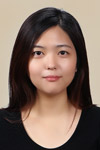2012 Sejong Music Composition Competition
Winners
| First Place | Yongbin Park Seoul, South Korea Ein klarer Klang for piano trio based on Chung-sung-gok |
|---|---|
| Second Place | David Hier Toronto, Canada Song of the Night for piano trio based on Chung-sung-gok |
| Third Place | Heeyoung Yang West Lafayette, IN, USA Birds (2012) for piano trio based on Bird Song |
| Honorable Mention | Bonnie Miksch Portland, OR, USA Song of Sanshin for piano trio based on Sang-ryung-san |
| Jung Yoon Wie Wooster, OH, USA Chung-sung-gok for piano trio based on Chung-sung-gok |

Yongbin Park studied music composition at Seoul National University with scholarship. As a full scholarship recipient Park studied composition with Professors Sang-Jick Jun and Uzong Choi from 2005-2009. He completed a special Music Composition training workshop by the Tong-Yeong Internationl Music Festival Academy held in Bangkok, Thailand in 2008. While he was a college student he won first prize from Dong-A competition in 2007 and grand prize from Piano Duo Music Composition in 2008.
His works have been performed at the Korea Piano Duo Association concert (2008) and Ensemble Yurim (2010 & 2011). His commissioned works were performed by Ensemble TIMF “An Evening with Korean Composers”(2010), Special concert by Ensemble TIMF in Athens, Greece, and European tour (2011, special concert commemorating 10th anniversary of Ensemble TIMF).
Ein Klarer Klang for piano trio
T국악의 대금이나 단소 같은 관악기 독주곡에서 두드러지는 일반적인 특징은, 그 악기들의 음색이 서양악기의 음색보다 다양한 스펙트럼(spectrum)을 지니는 데에 있다. 소위 헤테로포니 (Heterophonie)적 음색이 그것이라 할 수 있다. 청성곡에서 나타나는 대금이나 단소의 다양한 음색을 잔향, 단조로운 음향, 두꺼운 음향 등으로 다양하게 분리하여, 전형적인 서양음악 편성인 피아노트리오(피아노, 바이올린, 첼로)의 편성으로 재구성•재표현하고자 노력하였다.
청성곡에서 ‘청성’은 높고 깨끗한 소리를 의미하는데, 본래의 청성곡에서는 대금이나 단소를 통하여 고음의 풀피리 소리 같은 음향을 내고 있다. 이러한 아이디어를 내 곡에서 재해석하는 과정에서, ‘고음역’, ‘맑은소리’ 등의 아이디어는 유지하되, 그 음을 내는 방법은 새롭게 접근하고자 노력하였다. 피아노 트리오가 가진 연주의 가능성을 고찰한 뒤, 각 악기들이 가진 연주 기법들의 조합을 통하여 ‘고음역’과 ‘맑은소리’의 아이디어는 유지하면서, 국악적인 음색, 효과 등을 만들고자 노력하였다. 또한 관악 독주곡에서는 나올 수 없는 화음적인 주제를 통해 음색적으로 기존의 곡과는 다른 모습을 보여주고자 하였다.
마지막으로 기존의 청성곡에서는, 자주 반복되는 주제 모티브가 존재하고 그 모티브가 다양한 음가로 다양한 꾸밈음들과 전개되는 방식을 취하고 있다. 이러한 전개방식은 그대로 유지하며 본래의 곡의 분위기를 환기시키는 모티브는 자주 등장하되, 각각의 섹션 별로 조금씩 다른 분위기의 모티브를 활용하는 방법을 취하였다.
Korean traditional wind instruments, dae-gum and dan-so, produce tones that are in wider spectrum than their western counterparts, which is known as “heterophonie”. While playing Chung-sung-gok, dae-gum and dan-so produce subtle or residual sound colors (잔향), simple sound colors (단조로운 음향), and thick tonal colors (두꺼운 음향). I tried to express these different tonal qualities with piano trio by using each instrument—piano, violin, and cello.
“Chung-sung” literally means “clear sound” or “clear sound of high notes”. There are high notes in Chung-sung-gok produced by dae-gum or dan-so that is similar to the high notes produced by a shorter Korean wind instrument called pul-piri. I studied the range of tonal quality that can be produced by each instrument of piano trio, then reproduced the high notes and “clear sound” of Chung-sung-gok while continuing to express the traditional Korean tonality and effect. Additionally, I added chords to the theme that are not present in solo wind instruments.
In Chung-sung-gok we hear motifs played repeatedly using a variety of tonal quality and ornamentation. I tried to use a similar format, repeating motifs with slight variation, in order to recreate this ambience.

David Hier was born and raised in Toronto, Ontario where he has studied piano and composition. He is currently pursuing degrees in Composition and Theory from McGill university in Montreal where he has studied with John Rea, Jean Lesage, William Caplin and Christoph Neidhofer.
Song of the Night for piano trio
The chung-song-gok, with its nimble melodic lines, its pleasing contrasts, its evocative sounds and its flowery ornamentation, represents, to me, that exuberant yet profoundly meditative quality that so pervades every aspect of Korean society, culture and even daily life. In adapting these qualities to a more contemporary sound-world, that is, one with a slightly more extended harmonic vocabulary and a new conception of form, I have attempted to prove that the dazzling beauties of traditional Korean music are not out of place in the modern world, in fact, far from it. The ornamented, free-flowing and refreshingly irregular melody of the chung-song-gok has shaped every line of my piece, and the interval of the fourth nearly every harmony. In addition to the use of exact melodic elements of the chung-song-gok, its spirit is infused, quite clearly, into every bar.

Heeyoung Yang holds a M.M. in composition from Yonsei University (Korea) and College-Conservatory of Music, University of Cincinnati where she studied with Joel Hoffman. She attended Aspen Music Festival and studied with George Tsontakis. Her music has been performed in Korea, Japan, France, Croatia, Canada as well as in various place in the States. She is also active in Christian choral music, offering various works to churches in Ohio and Indiana area, as well as in Korea and Germany. She is currently working toward her doctoral degree with Joel Hoffman, Mara Helmuth, and Michael Fiday at College-Conservatory of Music, University of Cincinnati.
Birds (2012) for piano trio
This is a short piece based on Sae-Taryeong (Bird Song) for piano trio.
Five main pitches (A-C-D-E-F) in the original melody and their relationship, pitch class set, pitch center and their characteristic gesture mostly remain in the piece; vibrating note (A), a note without vibrato as pitch center (D), and bending note, appoggiatura (F-E).
The twenty-measure-long melody is divided into five phrases, four measures each, and become the essential ideas of each five sections in the piece.
The opening melody of Sae-Taryeong and its specific gesture of vibrating note (A), non-vibrating note (D), and bending note, appoggiatura (F-E) are emphasized in the first and second section. (mm.1-38 and mm.39-73.)
As the original tune centers bird sound, especially cuckoo with two note figure F-D, in its melody, various melodic and harmonic figurations describing birds sounds are presented in the middle section (mm. 74-101) and sound of cuckoo, F-D or other minor 3rd is also emphasized.
The essential melodic ideas of the fourth section, minor 3rd (A-C) and perfect 4th (A-D) are combined with several passages from the previous sections as a remembrance (mm. 102-138) and this tranquil fourth section opens the animated final section (mm. 139-203) which restates the original tune in an intense and passionate tone.

"Whether she’s working with acoustic or electronic instruments, Miksch is proving to be one of Oregon’s most vital musical voices."
–Brett Campbell, Oregon Arts Watch
Bonnie Miksch is a composer who writes both acoustic and electroacoustic works. Her music explores the distinctly human realms of emotions, dreams, and states of consciousness, and combines diverse elements with an ear for coherence. Her music has been performed in Asia, Europe, Canada, and throughout the U.S. She has received commissions from the Meet the Composer, The Fireworks Ensemble, Beta Collide, and The Oregon Music Teacher’s Association who awarded her “Oregon’s Composer of the Year” in 2011. Her works have also been performed by FearNoMusic, Third Angle Ensemble, newEar, and the Portland Vocal Consort, and presented at international, national, and regional venues including ICMC (China, Greece, Singapore, Denmark), The International Contemporary Music Festival (Korea), SEAMUS, the Third Practice Electroacoustic Festival, the Society for New Music, the New World Arts Electrocoustic Festival, Electrogals, and Cascadia Composers. Her music is available on the North Pacific Music and Aca Digital labels. With degrees from CCM at the University of Cincinnati and Syracuse University, she serves as the Coordinator of Composition Studies at Portland State University, where she has taught music theory, composition, and computer music since 2004.
Song of Sanshin for piano trio
Song of Sanshin uses the traditional Korean piece, sang-ryung-san, as its point of departure and point of return. In addition to these clear statements of the melody, several expressive elements of sang-ryung-san are explored throughout the piece. These elements include a strong sense of rhythmic freedom and fluidity, phrase endings on long notes punctuated by short eighths, abundant use of grace notes, trills, and other embellishments, and the use of the pentatonic scale as a harmonic skeleton.
The work is symmetrical in structure, projecting an approximate arch form, as inspired by symmetry in Korean art and the contour of mountains. The form resembles variations form, using the melodic gestures, mode, and expressive details of sang-ryung-san as a starting point for a journey which explores textural, harmonic, and expressive possibilities between the three instruments. There is a strong use of heterophony present in this work, where the three instruments play an embellished and out of sync unison, thus realizing the Korean principle of variety within unity. The sensual complexity of the interior sections seek to complement the simplicity of the opening and closing meditations.
Because sang-ryung-san was a prayer to the Buddha on the spiritual mountain, I was also inspired by the idea of the spirit of the mountain, as embodied by Sanshin, who was a traditional figure in Korean shamanism. My intent was to instill in the music a reverence for mountains, mysticism, and the inner longing of the soul. Mountains suggest journey, perhaps solitary, but with a sense of connection to all who have traveled the same still path.

Jung Yoon Wie was born in Seoul, Korea in 1990. In 2009, she began her composition study with James Carlson, a professor at the University of the South, while she was a high school senior. Since 2010, she’s been studying composition with Jack Gallagher at the College of Wooster, OH. Her first original orchestral piece called “Flying in Winter” was played by Cleveland Chamber Symphony as part of the Chamber Symphony’s annual “Young and Emerging Composers” event on April, 2012. She’s a pianist, also a violinist in the Wooster Symphony Orchestra and a member of the Wooster Chorus. Her setting for unaccompanied chorus of a text by Robert Southey, titled “How beautiful is Night,” was performed many times by Wooster Chorus this year.
Chung-sung-gok for piano trio
This piano trio is derived almost entirely from the song “Chung-sung-gok” as performed and notated in the contest materials and guidelines provided by the Sejong Cultural Society. The song is represented in the piece by melodic gestures, motives and fragments drawn especially from the opening of the Korean song, with its distinctive intervals and ornamentation. Significant use also is made of a recurring lyrical, sustained pentatonic element heard later in the traditional song, and the work grows out of contrasts based on the song's distinctive ornaments and long-held notes.